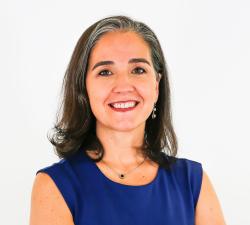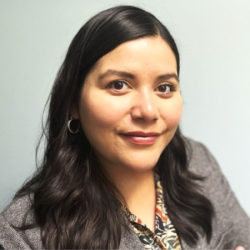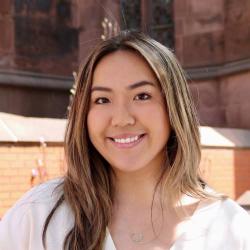This week’s Climate Ambition Summit and the United Nations General Assembly focused on “accelerating action” on the Sustainable Development Goals (SDG) highlight what young people across the globe already know: Today’s world is marked by complex challenges—the climate crisis, increasing levels of conflict and displacement, rising authoritarianism, and the diverse social and economic effects of a global pandemic—that intersect with historical injustices, including gender-based violence and discrimination, economic inequality, ableism, and racism. These realities make up the lived experiences of today’s children and youth, yet the great majority of education systems around the world do little to prepare them to not only navigate today’s challenges, but to be agents of positive change in their own lives, in their local communities, and on the global stage.
While the past few decades have seen great strides in “getting kids in school,” we are still lagging far behind in ensuring that being in school is meaningful, that learning is relevant, and that young people themselves are engaged as active participants and decisionmakers in their own learning pathways.
Efforts focused on expanding educational opportunities for young people often overlook the importance of supporting the development and exercise of agency. A fundamental component of full and equal participation and key to educational achievement, agency refers to the power, capacity, and ability to recognize and voice one’s hopes, make decisions about one’s life, and take action in body, speech, and mind.1 Agency sits at the nexus of the individual and her community. At the personal level, agency implies the development of a diverse set of skills, knowledge, beliefs, and behaviors. Yet the ability to act upon these beliefs and behaviors is often “culturally constrained” by external forces that influence young people’s lived experiences. Feminist authors, for example, center their definitions of agency not only individually, but in community with others, recognizing that agency must be situated within larger social structures and necessarily involves an analysis of power relations impacted by class, religion, race, and gender, among other factors.
For adolescent girls around the world, agency is a practical issue rather than a theoretical concept. Every day these girls make conscious decisions about their lives and futures, in their families, schools, and communities, while they navigate larger social structures, norms, and systems. Accounting for this daily struggle is vital to improving learning opportunities and life outcomes for youth and their communities. Yet the agency of young people, especially that of girls and young women living in the most marginalized contexts, is often misunderstood, unrecognized, underdeveloped, and/or actively stifled.
Since May of 2022, the Center for Universal Education (CUE) at Brookings has worked to explore agency through the Learning and Action Alliance for Girls’ Agency (LAAGA), a community of practice comprised of 23 leaders in gender equality in and through education from 18 countries across Africa, America, Asia, and the Middle East. All LAAGA members are alumni of the Echidna Global Scholars Program, and the LAAGA initiative grew out of their desire to engage more deeply with their peers from across the globe as well as CUE’s commitment to catalyzing opportunities for collaborative learning and action.
LAAGA envisions “a world that values the knowledge and dignity of girls and young women, listens to their voices, and supports them in taking action to shape their own lives and those of their communities.” This vision, as well as LAAGA’s structure, operations, research questions, methodological approaches, analytical frameworks, evidence products, and action plans are the result of iterative processes of co-construction that are grounded in feminist and collaborative approaches to research and practice that emphasize action-reflection and participation. In partnership with CUE, LAAGA is focused on co-creating shared ideas and understandings about the development and exercise of girls’ agency within diverse contexts in the Global South, and it seeks to put these ideas into action working with girls, their families and communities, practitioners, and policymakers.
Through this co-creative process, LAAGA members identified the need to bring a critical lens to research on “girls’ agency.” This meant first questioning the very definition of agency, a concept developed primarily by researchers, funders, and policymakers situated in the geographic Global North and measured with indicators that often have very little relevance in the context of adolescent girls living in marginalized communities. For example, being without a cell phone or a bank account may be more indicative of a context marked by systemic poverty and social and economic exclusion than a “lack” of agency on the part of a girl.
Other questions In LAAGA’s early development have included: What does “agency” mean, how does that vary by context, and who gets to define that? What do we mean by “girls”? Which girls, when and why? How does agency vary from situation to situation and who or what affects this, and why? And perhaps most importantly, how might we center girls’ voices, perspectives, and lived experiences in the research process?
In response to this initial phase of critical questioning, LAAGA has spent the past year designing and conducting research that aims to understand the nuanced nature of the development and exercise of girls’ agency with and for girls in four systematically marginalized communities, including:
- The Feni District of Bangladesh, a coastal community affected by floods, cyclones, and tidal surges where socioeconomically marginalized girls and their families face extreme poverty, violence, and chronic climate events.
- The Karamojong region straddling the borders of Kenya and Uganda, a nomadic pastoralist community in which 80% of residents live below the poverty line and face interclan conflicts and insecurity associated with cattle rustling.
- The mountainous Lao Cai Province of Vietnam, where 70% of the population identify as ethnic minorities and girls struggle against linguistic exclusion, harsh weather, complex terrain, and limited social networks.
- The mining district of Zvishavane in Zimbabwe, where, coupled with extreme weather and political instability, girls confront child labor, sexual abuse, and early marriages associated with poverty and a mining-based economy.
LAAGA’s research, which will be presented at a public event on November 7, is already beginning to enrich our understanding of what agency means for marginalized adolescent girls, how they express it in ways both small and large, and how practices, policies, relations, and norms at the family, community, school, and system level can more effectively center girls as transformative—and thriving—agents of change.
-
Footnotes
- This definition of agency was developed by the Learning and Action Alliance for Girls’ Agency (LAAGA) in the summer of 2022.
The Brookings Institution is committed to quality, independence, and impact.
We are supported by a diverse array of funders. In line with our values and policies, each Brookings publication represents the sole views of its author(s).







Commentary
Centering girls as agents of positive change—for themselves, their communities, and the world
September 19, 2023